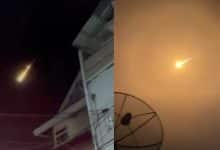NASA reveal 10 year time-lapse of the sun – VIDEO

The sun makes life on Earth possible. Without it, we wouldn’t be here, and it’s a constant fixture in our daily lives. But has anyone wondered what the sun actually looks like? Is there a way to find out without being blinded? Well, astronomers have come up with ways to observe it without scorching their retinas. One such tool is the Solar Dynamics Observatory, an “unblinking eye” that constantly observes the sun.
SDO images are produced by capturing only a specific ultraviolet wavelength, which allows scientists to see the “crown” of the star, or its outer layer. For 10 years, the SDO has been staring at the sun and recording every blip of activity Now, we can enjoy all this for ourselves in the comfort of our homes.
The timelapse video that NASA has just released reduces 10 years of images of the sun to just over an hour. Yeah, it’s an hour-long, so grab a cup of coffee and enjoy it.
The video, available at up to 4k resolution, is stunning. It shows a wealth of activity on the surface of the star at an early stage, ramping up until there are magnetic loops of plasma covering a large percentage of its surface. Then, just as quickly as they appear, the hot spots of activity seem to fade away, leaving the star much calmer.
This is the regular solar cycle, from a period of high activity called the Solar Maximum to a period of low activity called, appropriately enough, the Solar Minimum. The intensity of the maximum and the calmness of the minimum vary, but the cycles themselves are very clear.
While SDO kept an unblinking eye pointed at the sun, it missed a few moments. The dark frames in the video are caused by the Earth or the Moon eclipsing the SDO as it passes between the spacecraft and the sun. A longer blackout was caused in 2016 by a temporary problem with instrumentation that was successfully resolved after a week. Images where the sun is off-centre were recorded when the SDO recalibrated its instruments.
Observing the sun, and keeping track of how active or inactive it is, can be vital to predicting things like solar storms and other “space weather” that can affect the Earth. When the sun spews plasma into space, charged particles that reach Earth can damage communications satellites and even put space missions in jeopardy.
SOURCE: The New York Post
Latest Thailand News
Follow The Thaiger on Google News:


























